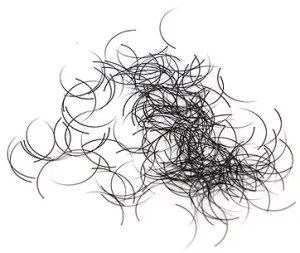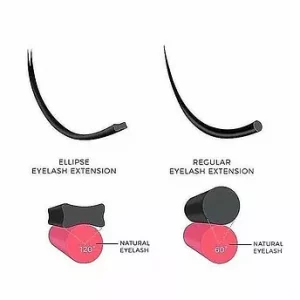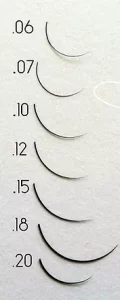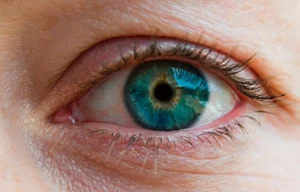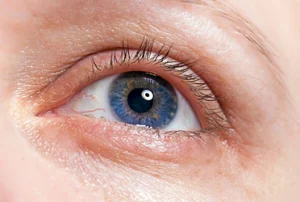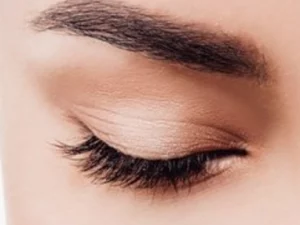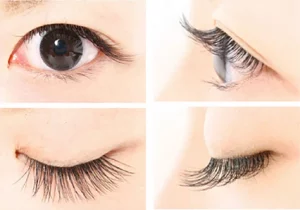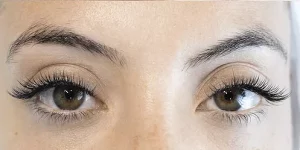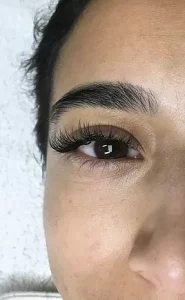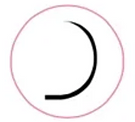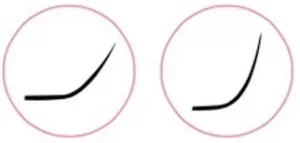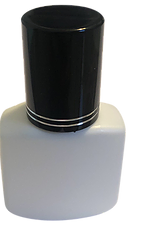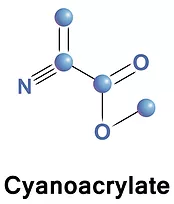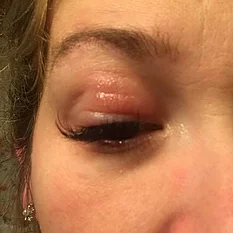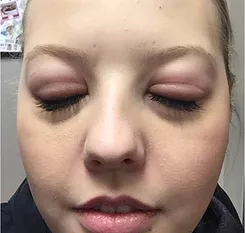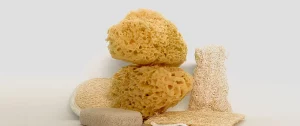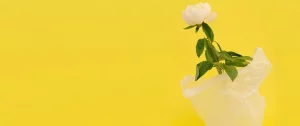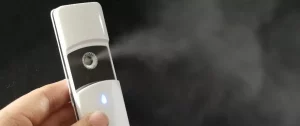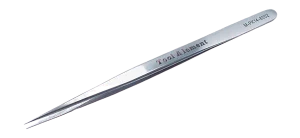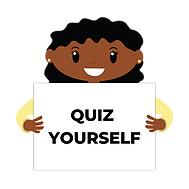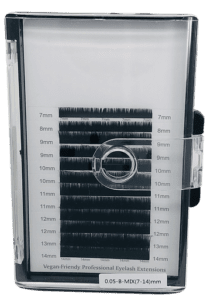
Lash Extension Trays
You will need to have a selection of extensions available because each client has different natural lashes. Different curls and patterns are needed to fit your client’s unique eye shape and desired look.
Watch the video below and read the additional information to learn everything you need to know about lash extension trays. CLICK PLAY TO BEGIN…
CLICK TO PLAY.
There are four components to every lash extension that you will need to know when deciding what to use on the client.

1. Material (what the extensions are made of…)
Eyelash extensions can be made of real mink (not widely used due to inhumane practices) or synthetic fibers (usually referred to as silk, synthetic mink, and/or flat lashes). They come in many different lengths, shapes, and thicknesses.
Real Fur from Mink: Very few suppliers still sell real mink lash extensions due to the unethical practices and allergies clients experience. We do NOT support the production or sale of real mink eyelash extensions and we are committed to only using manufacturing plants who are also committed to being vegan-friendly. If you want to learn more, click here to watch a video about a mink farm (beware of graphic footage).
Synthetic Mink: Most “mink lashes” you hear about are actually synthetic mink lashes made of a material called polybutylene terephthalate (PBT). This material is used in many products, such as toothbrush bristles.
Silk: Sometimes this is used as another name for synthetic mink lash extensions. Unlike their name, they are not actually made of silk but rather, they are made of the same material as synthetic mink lashes (PBT).
Flat/Ellipse: Flat lashes are also made of PBT but are shaped differently than synthetic mink or silk lash extensions. Instead of being cylindrical, they are flat. This allows the lashes to appear thicker without added weight. These give a more dramatic/mascaraed-look.
Flat/Ellipse lashes are not recommended for fine natural lashes as they tend to turn as they grow out and poke the client in the eye.
2. Diameter (lash thickness)
The diameter of the lash extension is often referred to as the “weight”. The weight and diameter are not always directly correlated though.
Used to create advanced technique volume/russian volume, and mega-volume lash fans (don’t worry about these right now):
.03, .05, and .07 diameters
Used to create classic lash sets:
.10, .12, .15, .18, and .20
We recommend never using anything larger than .20 diameter. There are .25 diameter lashes but they are usually pretty uncomfortable for clients and do not look very good.
Below are blown-up versions of the lash extension diameters.
Diameter Recommendations for Classic Lash Extension Application:
Fine Natural Eyelashes: 0.10 mm to 0.12 mm diameter eyelashes have the most natural look. This means more work for the stylist who needs to attach 50 to 100 eyelashes or more on each eyelid. The fine 0.10 mm eyelashes are used for very fine natural eyelashes that cannot take too much weight.
Pro Tip: If you have a blonde client and you are having difficulty seeing the lashes, tint the eyelashes first.
Mid-Range Natural Eyelashes:
0.15 mm diameter extensions look like mascaraed eyelashes but of course better, more gorgeous and longer. This lash diameter needs the support of naturally strong eyelashes for the extension not to fall sideways or get twisted in a short time.
Thick Natural Eyelashes: When a client has naturally thick lash hair, .18 and .20 diameters look great. Flat lashes also look really nice and give a mascara-look. These do require a little more adhesive to apply.
3. Curls (how curly the extension is…)
You can have a slight curl, curved or curled lash. These letters representing the curls may seem a little confusing now, but you will soon become very familiar with them.
Listed from LEAST to MOST curly: J, B, C, CC, D, DD, L, L+
The most common curls used today are B, C, & D. If you only have those three curls available at your lash salon, you will be set! The L and U curls are not as common. You may notice that some product manufacturers call DD curl lashes, U curl lashes.
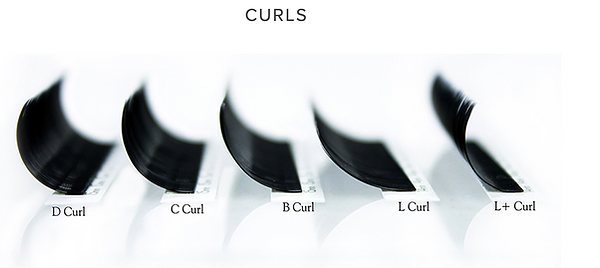
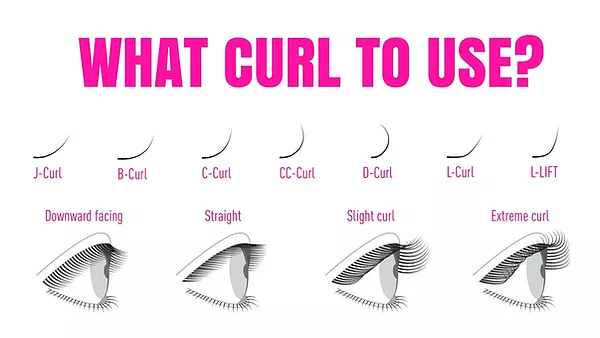
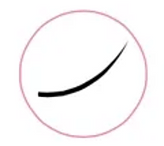
J-Curl eyelashes are the straightest and closest to the natural lash curl in most women. They start out by being straight and curl a little at the ends. They are suited for clients desiring length and volume. However, the volume is not visible from the front but rather in profile and when the eyes are lowered.
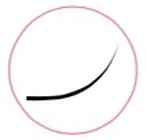
B-Curl comes with a more defined sweep than the J Curl, yet less than the C Curl. This makes them resemble natural eyelashes to a great extent and should be used if the natural eyelashes are quite straight.
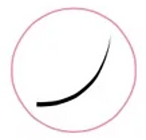
C-Curl is the most commonly used since it suits almost any kind of eyelash type and widens the gaze. They have a lovely sweep starting in the middle itself making the eyelashes look gorgeous even from the front.
CC-Curl (aka C+-Curl) is in between C and D curls.
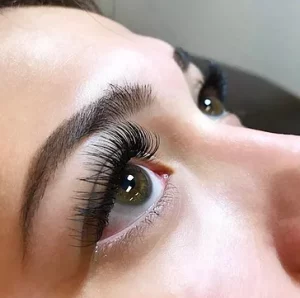
D-Curl speaks strongly of glamour because the upward sweep is very pronounced. Those who want to go for the doll look should apply D curls. Clients with deep set eyes cannot go for the D curl especially if they are longer than 12 mm since the ends then hit the eyelid. This causes friction and irritation.
DD-Curl (aka D+-Curl or U-Curl) is curlier than D curl and does not look fantastic on everyone. The curl is very pronounced. Many lash artists do not use this curl.
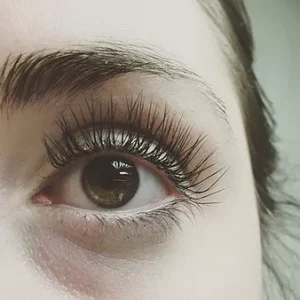
L-Curl is also called Barbie eyelash since the upward curl starts very close to roots itself. Women with short and straight eyelashes love this type of eyelash. These do tend to look a little funny after a couple weeks of wear though.
L+ Curl has a steeper upward bend than the L curl.
4. Lengths (how long the extension is…)
Less is more! The extension should be at THE MOST 50% longer than the natural eyelash. If you apply a longer lash than this, the lash will turn and poke your client in the eye as it grows out.
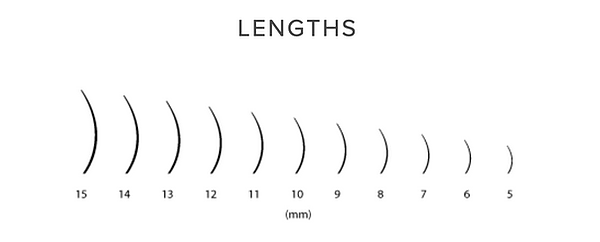
Lash Extension Glue
Your lash glue is the priciest product you will purchase to perform this service so it is important that you buy the right glue for your skill level, climate, comfort, and client base. Most lash artists will go try and waste money on many lash glues before they find the right one. The reason most lash artists go through this wasteful and expensive process is that most lash trainings aren’t teaching the new lash artists how to choose glues, and explaining why some work for them, and some do not.
Glue Ingredients
All professional eyelash extension glue contains the main ingredient called, cyanoacrylate. Some lash glues have more or less in their formula, but they all have it. Cyanoacrylate is a type of acrylic. This is an important ingredient for you to know and understand.
Cyanoacrylates make up almost all of the strong glues that you see on the market, including super glue and all industrial adhesives.
No! There are many types of adhesives within the cyanoacrylate family, including: ethyl, methyl, butyl, octyl and more. Different types of cyanoacrylates are designed for bonding to different surfaces.
Overall, this family of adhesives provide stronger bonding strength than other liquid adhesives (think Elmer’s Glue, Latex Glue, etc).
Cyanoacrylates are an “acrylate resin”. In its liquid form, the chemical is very irritating and tends to have a strong odor. However, once it is dried and cured, the product is less reactive and becomes almost non-irritating and non-allergenic.
When it is solidified, your client should have NO discomfort! In fact, they should barely be able to feel the lashes.
Formaldehyde is not an ingredient in any eyelash extension adhesive on the market. You can confirm this for yourself by checking the Material Safety Data Sheet (MSDS) for each chemical product supplied by the manufacturer.
It is, however, formed as a byproduct of the decomposition of other materials in the adhesive. This includes those adhesives labeled “formaldehyde-free”.
Doug Schoon (Cosmetic Scientist) recently held a live Facebook Q&A regarding eyelash extensions. During which, he stated that in order for formaldehyde to be harmful in humans, it must be breathed in high volume for a long period of time. Exposure to the tiny amount of formaldehyde produced during the application of eyelash extensions is minor, and not harmful to your health.
Everything on the planet has a safe and unsafe level of exposure. Too much water can kill you! (google water intoxication). To this end, cyanoacrylate and its byproducts are only dangerous upon overexposure, if no precautions are taken.
Work in a well-ventilated area
Wear a mask
Use source-capture ventilation if possible.
Fully cure leftover adhesive by misting the lashes with water
Dispose of leftover glue in glue rings in a trash bin with lid
If you’d like to see the full live Q&A with Doug Schoon, click here.
Glue Allergies
Some clients will have or develop allergies to your glue. This will happen with any lash extension glue you buy, but there are some glues that have higher levels of cyanoacrylate and those may cause more clients to develop the allergy.
In the allergy section of the training, we will talk about how these allergies develop.
What can you do to minimize allergic reactions to your glue?
If a client has sensitivities to products, wash the lashes, eyelid, and under the eye before the client leaves.
There will be more information about this in the allergy section.
Teach your clients how to wash their lashes at home and encourage them to do this daily. Sometimes seasonal allergies get confused as a lash allergy because pollen is sitting in the client’s lash extensions and they are not cleaning them daily.
Have clients do a patch test before getting a lash set. Especially, clients who tend to have allergies.
Mist the lashes with water in your nanomister during the service and at the end of the service. This cures the glue immediately.
How to choose your glue:
SKILL LEVEL
For newer lash artists, a glue that has a slower dry time (3-5 seconds) is best because as you are learning, you will need more time to get the lash attached. As you advance, you will want to buy quicker drying glue (1-2 seconds).
HUMIDITY
Buy a humidity tracker and find out what the average humidity within your room is on most days. Check the glue you are buying to find out the optimal room humidity for the glue.
GLUE COLOR
It is recommended that beginners use black glue because it is easier to see the glue on the lash extension. Once you are advanced, you may want to switch to clear glue because it is lighter and tends to dry faster.
GLUE VISCOSITY
Thin to medium viscosity allows for you to apply lighter and more comfortable lashes. Thick viscosity can cause more stickies (lash extensions stuck together) and can also cause lashes to feel heavy and uncomfortable for the client. Thick viscosity glue was popular when lash extensions first hit the market but is not as popular today.
How to care for your glue:
STORE IN A ROOM TEMP PLACE
Do not refrigerate your glue. Condensation will form inside the glue bottle and it will cure the glue from the inside of the bottle. The best place is a drawer in your studio.
WIPE YOUR GLUE LID AFTER EACH USE
Your glue cap will get clogged if you don’t wipe it each time. Once it is clogged, you will probably have to throw the bottle out. Don’t throw money away! Wipe your glue cap.
PUT THE LID ON TIGHT AFTER EACH USE
It is recommended that beginners use black glue because it is easier to see the glue on the lash extension. Once you are advanced, you may want to switch to clear glue because it is lighter and tends to dry faster.
THROW OUT YOUR GLUE EVERY 3-4 WEEKS
Even if you still have glue in the bottle, the glue changes viscosity overtime when the bottle is opened and closed repeatedly. Try buying smaller glue bottles (3ml or 5ml) so you don’t waste much glue.
Tips to get the best results with your glue:
MIST LASHES WITH NANOMISTER
During and after the service, mist the lashes with the nanomister. When water and lash glue come in contact, the glue solidifies. Always fill your nanomister with distilled water.
DRY WITH FAN BEFORE YOU MIST
Dry the newly applied lashes with a fan before you nano-mist them. This prevents shock polymerization. Read more about that below.
ONE DROP OF GLUE AT A TIME
Only put one drop in your glue ring at a time. If you put too much glue in the glue ring, you could accidentally spill the glue on your client. It also increases the fumes near the client’s eyes.
MONITOR HUMIDITY
Consistently monitor your lash room humidity level. Since the lash glue cures with water (this includes water in the air too), your humidity in the lash room is super important. Check the glue you bought to see the recommended humidity and if your lash room is too high or too low. Use a humidifier or dehumidifier to get the lash room humidity right. If you do not monitor and adjust the humidity as needed, your glue may dry too fast one day and too slow another day.
What is “shock polymerization”?
Something you may notice one day is that the glue on your client’s lashes will frost white after their eyes got watery during the service, or you misted them with water before the lashes were dried.
That’s the result of shock polymerization, also known as “blooming”. The scientific chemistry term for this is “efflorescence” (in French it means “to bloom”). When the lash glue (specifically the ingredient, cyanoacrylate) is exposed to too much water before the glue is dry, it can flash cure, become white, hard and brittle. In other words, it cures too fast and this is bad for retention.
The Merriam-Webster dictionary defines polymerization as “a chemical reaction in which two or more molecules combine to form larger molecules that contain repeating structural units.” Cyanoacrylate, the main active ingredient in eyelash extension adhesive, needs to polymerize in order for the lash glue to “cure”. This process turns the adhesive from liquid to hard and solid. This is what we want as lash artists because it allows the client’s lash extensions to last and also allows them to wet their lashes without any retention issues.
How to prevent shock polymerization (lash glue curing TOO QUICKLY)?
- Dry your work with a fan before nano misting.
- Change your glue drop every 20-30 minutes.
- If a client gets very watery eyes, dry the lashes as quick as possible.
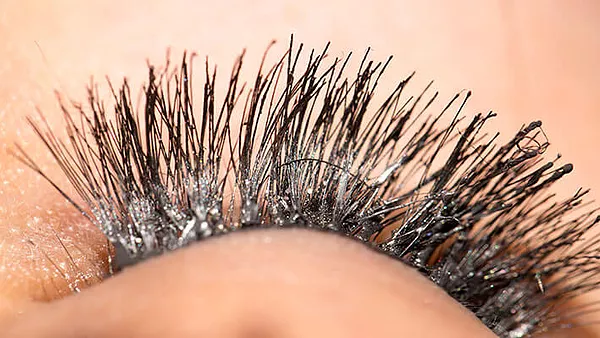
TWEEZERS
There are many different lash extension tweezers available. You will probably try out many different tweezers until you find the right ones for your hands and the way you apply the lashes. Expensive tweezers don’t always mean better tweezers.
You will need two different tweezers to apply lash extensions:
1. Application tweezer: This is the tweezer in your dominant hand that you will use to pick up the lash extension and place it on the natural lash. There are many options but here are my favorite two options…you’ll have to find what works for you:
- Straight, strong grip, pointy, and short. These are my personal favorite because they give me a lot of control, are strong enough to remove old lash extensions, and inexpensive so if they drop and they get bent, you don’t feel bad about throwing them out.
- Curved Volume Tweezers. Are for classic application and find these make it easier to apply the lash extension. But, you will have to see what works for your hands and method.
2. Isolation tweezer: This tweezer will be used in your non-dominate hand to isolate a single natural lash so that you can see it while you apply the extension. You may need to try a few different types to find what works for you.
Here are some varieties of lash isolation tweezers recommended (keep in mind there are many other varieties):
- Straight, strong grip, pointy, and short. These are my personal favorite because they give me a lot of control, are strong enough to remove old lash extensions, and inexpensive so if they drop and they get bent, you don’t feel bad about throwing them out.
- Straight, medium/weak grip, pointy, and long. These allow you to ensure you are not putting too much of your hand weight on the client’s forehead but they have less control than the shorter straight tweezers.
- Curved, medium/weak grip, and long.
How to hold your tweezers:
Put them in your hands and act like you are throwing a dart. This is how you know they are in the right position in your hands.
NANOMISTER
The nanomister is key to curing the lash extensions at the end of the service. The fine mist of water from the nanomister touches the dried but not completely cured lash adhesive/glue and cures it. By doing this, your clients can get their lashes wet right away (no waiting 24 hours) and it prevents stinging when the client opens their eyes.
How to use the nanomister:
- Use distilled water (or bottled spring water). Do not use tap water and do not fill from the tap. Particles in the tap will build in your mister and it won’t work overtime.
- Empty and leave your mister open after the end of each day, otherwise mold will grow.
- Keep the mister around 5 inches away from the natural lashes.
- Wave the mister from eye to eye and cure at the end for around 15 seconds each eye.
- If you see water particles forming – you are too close!
- If you see a white film on the lashes, you have shock polymerized the adhesive and this white film is actually tiny cracks in the adhesive which can affect retention and it looks bad.
- Mist your client’s (and your own!) eyes after they are open to return moisture to the eye – Mist casually during the day while sitting at a desk, it feels amazing!
FAN
You will use your fan to dry the lashes before you mist them with the nanomister. It is recommended to buy a rechargeable fan instead of a battery-run one.
OTHER ITEMS YOU NEED
Disposable Mascara Wands: this is what you will use to brush the lash extensions. Never brush uncured (dried and misted) lashes as brushing uncured lashes will cause them to stick together. NEVER REUSE MASCARA WANDS. GIVE THE CLIENT THE MASCARA WAND YOU USED AT THE END OF EVERY SERVICE.
Disposable Microfiber Wands: this is what you will use to clean and prime the lashes. Do not use cotton swabs as they will get stuck in the lash extensions. Cotton also can react with wet glue which is why cotton is not used in the eyelash extension service. NEVER REUSE MICROFIBER WANDS.
Glue Rings: This is what you will put the glue in. NEVER REUSE GLUE RINGS.
Lash Cleanser: This is what you will use to clean the lashes.
Witch Hazel: This is what you will use to prime the lashes and remove the excess oil. There is no need to buy a special lash primer. And, more importantly, you want to minimize chemicals near the eyes so using witch hazel is much safer than the chemical mixtures in primers on the market. You can buy it at Walgreens, the grocery store, or on Amazon.
Double-Sided Tape: You’ll use this to attach your lash extension strips to it. You can buy this at Walmart, etc. Make sure you buy the Scotch brand tape because the off-brand tape doesn’t stick well enough (from personal experience).
Micropore Tape: This is used to pull up the eyelid and tape down the bottom lashes.
Eye Pads: These are placed under the eyes to protect the client’s under-eye skin and keep the bottom lashes down.
Quiz Yourself
Answer the questions below and then check your answers by clicking the down arrow next to it. Just a reminder…there is a final exam at the end of this course and in order to receive your certificate, you will need to pass it. Re-read the information above if you didn’t pass the quiz below.
Cyanoacrylate
No, they will get stuck in the extensions and cotton reacts with wet lash glue (causes smoking)
Removes excess oil from the lashes
No, this will cause them to stick together.
The curl type
No way! It is a super unethical practice, your clients may be allergic to the fur, the fur is not black and not curly.
To create a fuller and mascaraed-look without added weight to the natural lash.
PBT (same material that makes toothbrush bristles)
A humidity tracker, and a humidifier or dehumidifier (depends on where you live)
It is not recommeded. Start with black glue as it is easier to see.


